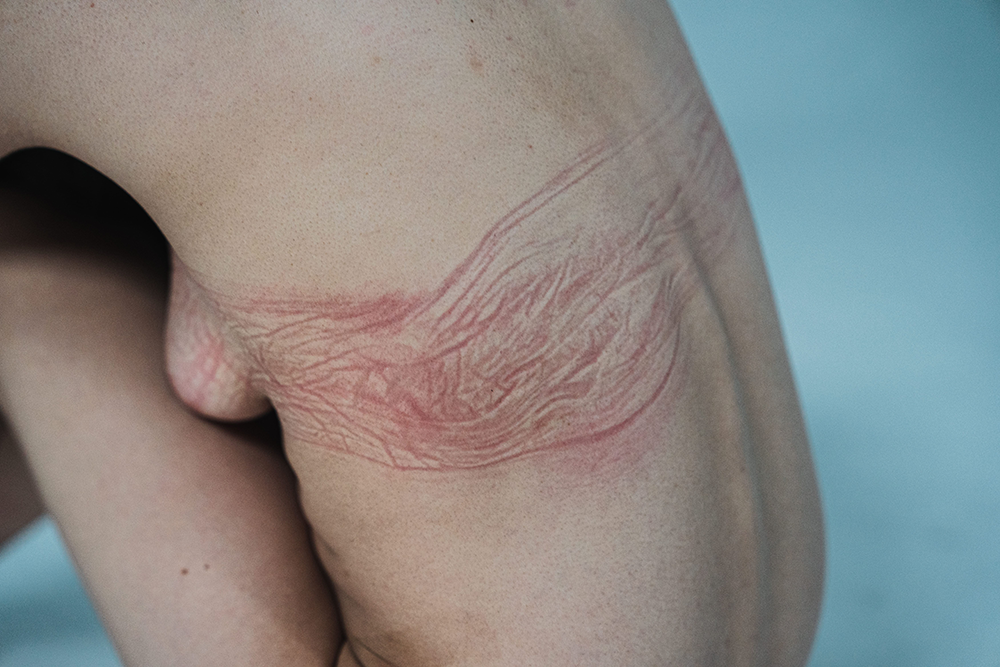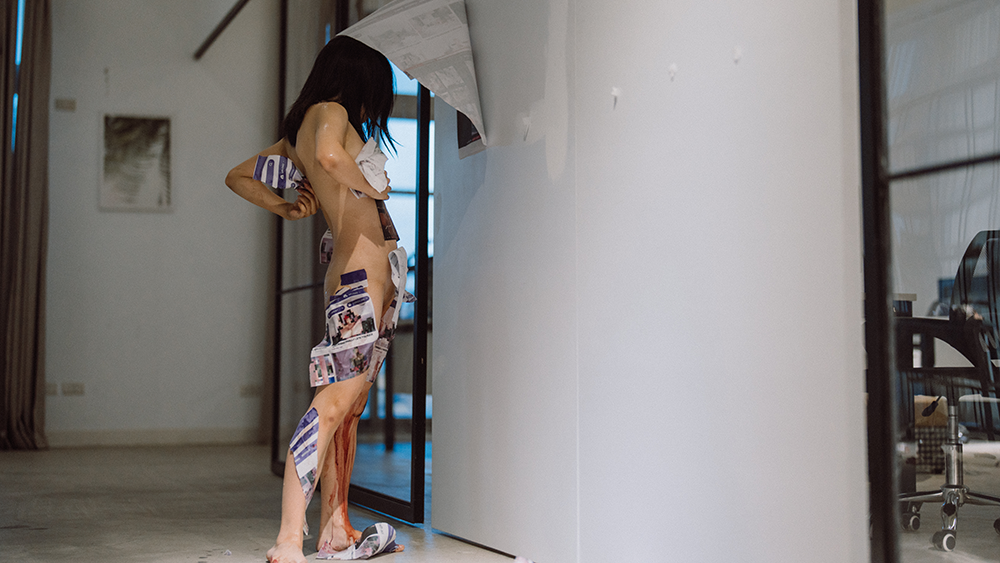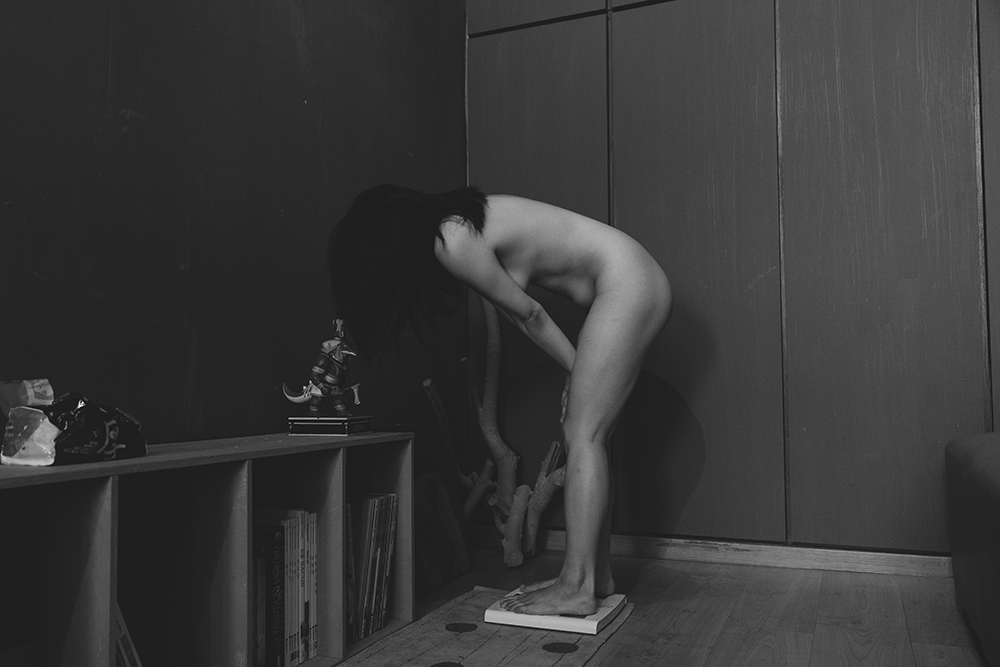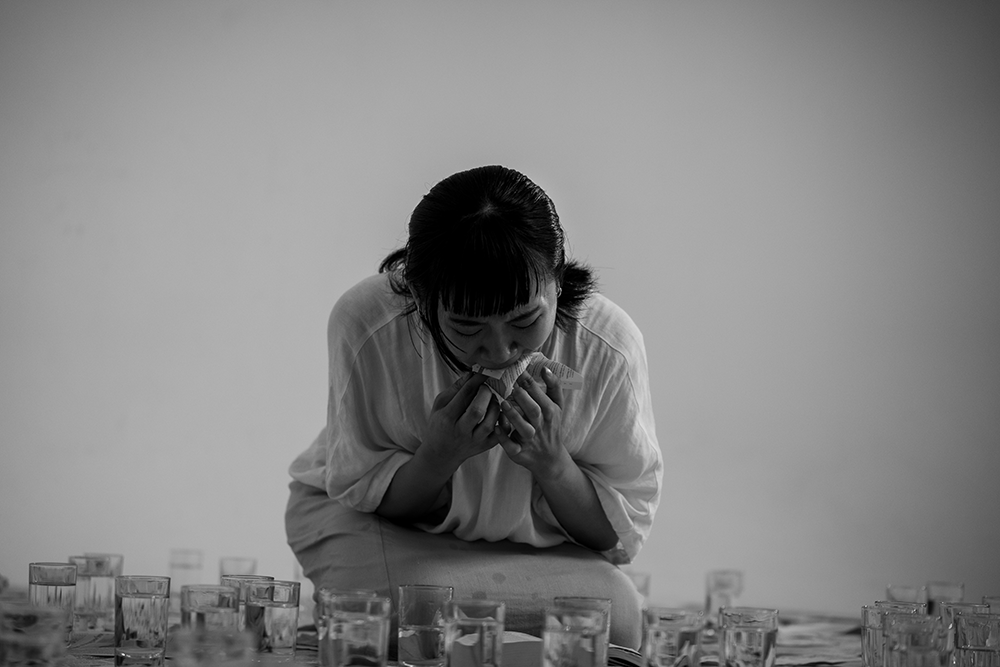Chu Ling-Jung, born in Taiwan in 2000, is an artist focused on feminism and consciousness. Her works often explore the unease in women’s body shaping and gender perception under a patriarchal society and present these themes through deliberate bodily transformations.
Taichung, Taiwan
@chu_lingjung | chulingjung.myportfolio.com
INTERVIEW
The female body plays a central role in your work. What inspired you to explore this theme, and how do you hope audiences interpret your exploration?
My exploration and questioning of my own gender identity has always been the starting point of my creative process, reflecting a strong defiance toward the connection between the body and society. I hope viewers, through my work, come to realize that one’s sense of identity is not predetermined, nor can society’s imposed expectations alter our personal understanding of identity and rights.

What motivates you to continually challenge societal norms through your performances?
I believe the body is the medium best suited to challenging social norms, because under societal structures it is inherently constrained. Whether it concerns the connection between consciousness and the body, the manifestations of gender, or the exploration of identity, the body remains closely intertwined with these issues. It also more authentically reveals the conditions we experience when we exist simply as “human.”

What was the creative process behind your solo exhibition The Shaping of Femininity? How does it reflect your overall artistic philosophy?
My solo exhibition, “The Shaping of Women”, extends my creative practice to the female body as a form of resistance against gender essentialism. During the performance process, the body is squeezed, covered by heterogeneous liquids, and connected with various objects, each instance imparting distinct messages and symbols to its altered state. As the performance unfolds over time, the layered accumulation of these bodily transformations mirrors a continual process of reconstructing both bodily expression and identity. Through the body’s changing appearances, I aim to examine how women are shaped under a patriarchal society, while simultaneously employing the body as a narrative medium to convey my core artistic ideals.

Your work has been showcased at various international art fairs. How does presenting your art in global contexts differ from local exhibitions in Taiwan?
In truth, the Taiwanese art scene has yet to fully embrace my form of artistic creation, so I have no basis for comparing the differences within it. However, from a broader Taiwanese perspective, it appears that viewers can perceive certain messages in my work—ones they recognize as important to be aware of. For me, that alone is sufficient.

What themes or concepts are you currently exploring for your upcoming exhibitions, such as THE BODY LANGUAGE in Venice or the Rome International Art Fair?
My exhibited works primarily explore how women, through a form of self-sexualization, critically examine society’s rigid definitions of female identity while reclaiming the perspective shaped by the male gaze.

What advice would you give to emerging artists who wish to explore performance art?
For me, performance art is a means of constructing one’s own life—a way to assume control over scripted yet unpredictable phenomena.
I believe the crux of performance art lies in how you build an event and, before it unfolds, how you anticipate its form and significance.
On a deeper level, it also involves foreseeing the bodily state and emotions you can manage in the moment of the event.